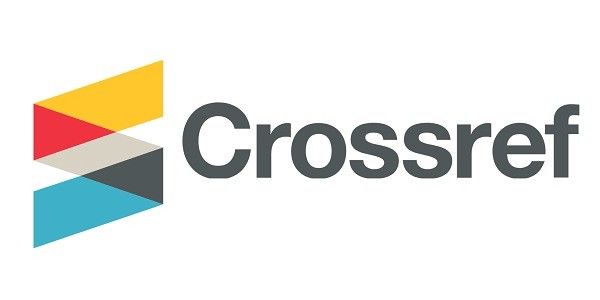Abstract
This paper presents a theoretical framework that explores visual meaning in the design and use of interior space. It is comprised of three main parts. The first outlines the framework and draws on several key theories. The second introduces three very different constructs as case studies that in#uence (or are a product of) spatial quality, namely: buildings, faces, and songs of alienation. The third part is a discussion about how each of these three constructs are linked to each other as well as to the idea of interiority. While architectural forms are containers of meaning, the way in which interior space is curated is driven by deeper meaning–one that transcends form and function because people ultimately produce the meaning. And because each person is different, the conditions of interiority (in this case, the meaning that resides within each person) drives the meaning of external constructs that act as enclosures of meaning (buildings and their interiors). The findings are that the mind and body can be projected beyond the facade and into the spaces contained in the buildings we occupy. The role of technology is also important because changes in technology help mediate the process of linking the meaning inside with the meaning out there.
Publication Date
1-24-2020
References
Aranda, J., Wood, B. K., & Vidokle, A. (Eds.). (2015). The internet does not exist. Berlin: Sternberg Press.
Arcade Fire Lyrics: “Modern Man” (2019). Retrieved from https://www.azlyrics.com/lyrics/arcadefire/modernman.html
Arcade Fire Lyrics: “My Body Is A Cage” (2019). Retrieved from https://www.azlyrics.com/lyrics/arcadefire/mybodyisacage.html
Arcade Fire Lyrics: “Sprawl I (Flatland)” (2019). Retrieved from https://www.azlyrics.com/lyrics/arcadefire/sprawliflatland.html
Arcade Fire Lyrics: “Suburban War” (2019). Retrieved from https://www.azlyrics.com/lyrics/arcadefire/suburbanwar.html
Ballantyne, A. (2007). Deleuze and Guattari for architects. London; New York: Routledge.
Baudrillard, J. (1983). Simulations. New York: Semiotext(e).
Berleant, A. (1997). Living in the landscape: Toward an aesthetics of environment. Lawrence: University Press of Kansas.
Beyond good and evil, by Friedrich Nietzsche. (2009, December 7). Retrieved from https://www.gutenberg.org/files/4363/4363-h/4363-h.htm
Brussat, D. (2017, November 30). Our eyes poke back at mods. Retrieved from https://architecturehereandthere.com/2017/11/29/eye-tracking-sussman-architecture/
Brussat, D. (2018, December 28). New blog page on ‘Dystopia’. Retrieved from https://architecturehereandthere.com/2018/12/28/new-blog-page-on-dystopia/
Carey, J. T. (1969). Changing courtship patterns in the popular song. American Journal of Sociology, 74(6), 720–731. https://doi.org/10.1086/224722
Carpo, M. (2014, February). Breaking the curve: Big data and design. Retrieved from https://www.artforum.com/print/201402/breaking-the-curve-big-data-and-design-45013
Carta, S. (2018). Digital personal space: From the plaza to the global canopy. Journal of Urban Cultural Studies, 5(1), 91–105. https://doi.org/10.1386/jucs.5.1.91_1
Chakrabarti, V. (2018). How we can design timeless cities for our collective future. Retrieved from https://www.ted.com/talks/vishaan_chakrabarti_how_we_can_design_timeless_cities_for_our_collective_future
Collins, G. R., & Sitte, C. (2006). Camillo Sitte: The birth of modern city planning. Mineola, NY: Dover.
Columbia GSAPP. (2018a). Ways of knowing cities [Video file]. Retrieved from https://www.youtube.com/watch?v=VPnn2z9tbls
Columbia GSAPP. (2018b). Ways of knowing cities Panel 7 [Video file]. Retrieved from https://www.youtube.com/watch?v=L4iwcgHciow
Cullen, G. (1995). The concise townscape. Oxford ; Boston: Butterworth-Heinemann.
Diemer, M. J., Currie, G., De Gruyter, C., & Hopkins, I. (2018). Filling the space between trams and place: Adapting the ‘Movement & Place’ framework to Melbourne’s tram network. Journal of Transport Geography, 70, 215–227. https://doi.org/10.1016/j.jtrangeo.2018.06.010
Dixon, T., Farrelly, L., & Pain, K. (2015). A smart and sustainable urban future. Estate Gazettes, 100–102. Retrieved from http://www.estategazettes.com
Doersch, C., Singh, S., Gupta, A., Sivic, J., & Efros, A. (2014). What makes Paris look like Paris? ACM Transactions on Graphics, 31(4)
Eck, J. (2018, July 18). Cross-country redux: An architect’s inspiring—and dispiriting—drive across America. Retrieved from http://commonedge.org/an-architects-inspiring-and-dispiriting-drive-across-america/
Farias, I., & Bender, T. (Eds.). (2010). Urban assemblages: How actor-network theory changes urban studies. London; New York: Routledge.
Foer, F. (2018, July 6). The death of the public square. Retrieved from https://www.theatlantic.com/technology/archive/2018/07/the-death-of-the-public-square/564506/
Glen Campbell Lyrics: “Wichita Lineman” (2019). Retrieved from https://www.azlyrics.com/lyrics/glencampbell/wichitalineman.html
Google’s Road Map to Global Domination (2013, December 11). The New York Times. Retrieved from https://www.nytimes.com/2013/12/15/magazine/googles-plan-for-global-domination-dont-ask-why-ask-where.html
Hollander, J. B., Sussman, A., & Carr, H. C. (2018). Seeing the ‘unseen’ in Devens. Retrieved from https://www.cnu.org/sites/default/files/Seeing%20the%20%E2%80%98Unseen%E2%80%99%20in%20Devens%2C%20MA.pdf
Hollander, J., & Foster, V. (2016). Brain responses to architecture and planning: A preliminary neuro-assessment of the pedestrian experience in Boston, Massachusetts. Architectural Science Review, 59(6), 474–481. https://doi.org/10.1080/00038628.2016.1221499
Hustwit, G. (2015, March 18). Dieter Rams: If I could do it again, “I would not want to be a designer.” Retrieved from https://www.fastcompany.com/3043815/dieter-rams-if-i-could-do-it-again-i-would-not-want-to-be-a-designer
I run “facial recognition” on buildings to unlock architectural secret. (2018, April 20). Retrieved from https://www.fastcompany.com/90168809/i-run-facial-recognition-on-buildings-to-unlock-architectural-secrets
Jung, C. G. (2015). Man and his symbols by Carl G Jung 6 [Video file]. Retrieved from https://www.youtube.com/watch?v=ozVSJCsa7C0
Jung, C. G., Franz, M.-L., & Freeman, J. (1964). Man and his symbols. New York: Anchor Books.
Kitchin, R., & Dodge, M. (2011). Code/space: Software and everyday life. Cambridge, Mass.: MIT Press.
Koch, C. (2013). Lecture 11: Visual Attention and Consciousness [Video file]. Retrieved from https://www.youtube.com/watch?v=pnfudjQwjS8&
Leach, N. (Ed.). (1997). Rethinking architecture: A reader in cultural theory. New York: Routledge.
Lefebvre, H., & Nicholson-Smith, D. (2011). The production of space. Malden, Mass.: Blackwell.
Movers and shakers: New digital executive roles for Cameron Brill and Richard Kay (2018, February 19). Retrieved from https://www.cio.co.nz/article/633546/why-data-driven-customer-centric-mentality-future-everything/
Neglected utopia: Photographer explores the forgotten modernist estates of Paris. (2016, February 16). Retrieved from http://www.creativeboom.com/photography/neglected-utopia-photographer-explores-the-forgotten-modernist-estates-of-paris/
Not over till fat lady sings (2018, May 16). Retrieved from https://architecturehereandthere.com/2018/05/16/fane-tower-rejected-by-cpc/
Otty, L. (2005). The No Man Show: Technology and the extension of presence in the work of Andy Warhol. ESharp, 5.
Owen Hatherley: ‘What is happening at Sewoon Sangga is extraordinary’ (2018, January 4). Retrieved from https://www.dezeen.com/2018/01/04/owen-hatherley-sewoon-sangga-seoul-extraordinary-revamp-brutalist-megastructure/
Paris’ Utopian village of concrete cabbage (2018). Retrieved from http://themindcircle.com/paris-utopian-village-concrete-cabbage/
Peterson, J. B. (2017a). 2017 Personality 02/03: Historical & Mythological Context [Video file]. Retrieved from https://www.youtube.com/watch?v=HbAZ6cFxCeY
Peterson, J. B. (2017b). 2017 Personality 04/05: Heroic and Shamanic Initiations [Video file]. Retrieved from https://www.youtube.com/watch?v=wLc_MC7NQek
Peterson, J. B. (2017c). 2017 Personality 06: Jean Piaget & Constructivism [Video file]. Retrieved from https://www.youtube.com/watch?v=BQ4VSRg4e8w
Polanyi, M., & Grene, M. (1969). Knowing and being. London: Routledge and Kegan Paul.
Rabari, C., & Storper, M. (2015). The digital skin of cities: Urban theory and research in the age of the sensored and metered city, ubiquitous computing and big data. Cambridge Journal of Regions, Economy and Society, 8(1), 27–42. https://doi.org/10.1093/cjres/rsu021
Rodaway, P. (2011). Sensuous geographies: Body, sense, and place. London: Routledge.
Salingaros, N. A. (1999). Urban space and its information field. Journal of Urban Design, 4(1), 29–49. https://doi.org/10.1080/13574809908724437
Salingaros, N. A., & Mehaffy, M. W. (2006). A theory of architecture. Solingen: Umbau-Verl.
Savage, M. (2017, August 9). Wichita Lineman: The unfinished classic. BBC News. Retrieved from https://www.bbc.com/news/entertainment-arts-40861326
Searle, J. (2016). The problem of perception & intentionality [Video file]. Retrieved from https://www.youtube.com/watch?v=lf_4t0_HUx8
Sharr, A. (2007). Heidegger for architects. London; New York: Routledge.
Stafford, B. M. (2014). Selective attention: Neuroscience and the art museum [Video file] Retrieved from https://www.youtube.com/watch?v=AvoGEScg0m4&feature=youtu.be
Sussman, A., & Chen, K. (2017, August 22). The mental disorders that gave us modern architecture. Retrieved from http://commonedge.org/the-mental-disorders-that-gave-us-modern-architecture/
Sussman, A., & Hollander, J. (2018, July 19). Three fundamental errors in architectural thinking and how to fix them. Retrieved from https://www.cnu.org/publicsquare/2018/07/19/three-fundamental-errors-architectural-thinking-and-how-fix-them
Sussman, A., & Ward, J. M. (2016, June). Planning for the subconscious. Retrieved from https://www.planning.org/planning/2016/jun/subconscious/
Sussman, A., & Ward, J. M. (2017, November 27). Game-changing eye-tracking studies reveal how we actually see architecture. Retrieved from http://commonedge.org/game-changing-eye-tracking-studies-reveal-how-we-actually-see-architecture/
The neuroscience of architecture: The good, the bad—and the beautiful—Historic properties and traditional architecture (2018, February 19). Retrieved from https://www.traditionalbuilding.com/opinions/the-neuroscience-of-architecture
The Troggs Lyrics: “Wild Thing” (2019). Retrieved from https://www.azlyrics.com/lyrics/troggs/wildthing.html
Twenty years later, everything is The Truman Show (2018, June 5). Vanity Fair. Retrieved from https://www.vanityfair.com/hollywood/2018/06/truman-show-anniversary-jim-carrey-peter-weir-laura-linney
Wilson, M. (2018, February 26). A mesmerizing first look at the Dieter Rams documentary. Retrieved from https://www.fastcompany.com/90161817/a-mesmerizing-first-look-at-the-dieter-rams-documentary
Wilson, M. (2018, October 8). Dieter Rams wants Silicon Valley to stop. Retrieved from https://www.fastcompany.com/90246965/dieter-rams-wants-silicon-valley-to-stop
Your city is watching you. (2018, January 17). Retrieved from https://www.curbed.com/2018/1/17/16897222/machine-learning-urban-planning-sidewalk-labs
Your personal space is no longer physical–It’s a global network of data. (2018, June 1). Retrieved from https://theconversation.com/your-personal-space-is-no-longer-physical-its-a-global-network-of-data-97140
Submitted Date
2019-08-07
Accepted Date
2019-10-15
First Page
41
Last Page
60
Recommended Citation
De Kock, P. M. (2020). Buildings, Faces, Songs of Alienation: How Interiority Transforms the Meaning Out There. Interiority, 3 (1), 41-60. https://doi.org/10.7454/in.v3i1.68
Creative Commons License

This work is licensed under a Creative Commons Attribution-NonCommercial 4.0 International License
Author(s) retain the copyright of articles published in this journal, with first publication rights granted to Interiority.






